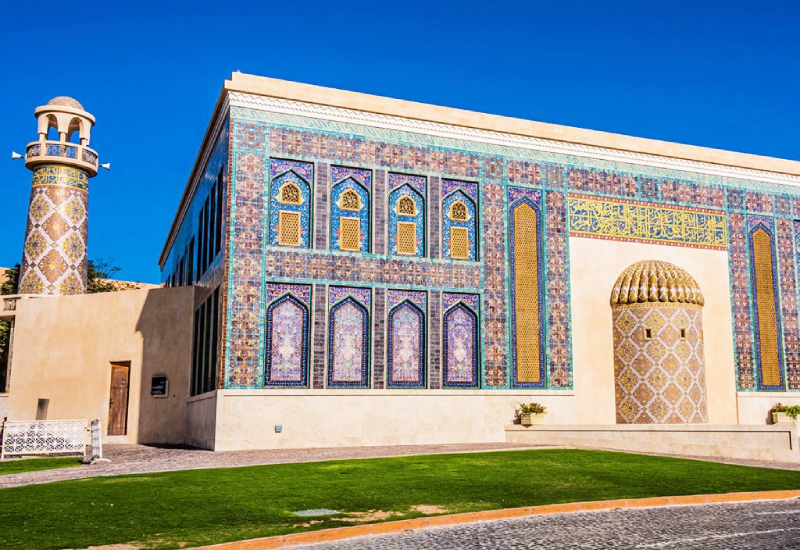Islamic architecture, a worldwide known and popular architectural style, is a reflection of the cultural and religious traditions of the Islamic World. Including a deep history, beliefs, and a unique artistic expression of Islam, this architectural style has significantly contributed to the field of architecture and design elements.
With its unique and innovative design that displays deep meanings, this style has been an inspiration for modern designers. Interestingly, the Islamic architectural elements are varied and diversified throughout different regions. Let’s explore Islamic architecture features.
Table of Contents
ToggleIslamic Architecture History
Islamic architecture has developed over time and experienced a lot of changes from its early stages to the most recent one. The early Islamic period, which traces back to the 7th-10th century, was the first emergence of the mosques in Medina and Damascus, and the Islamic style took basic architectural forms, getting a lot of influences from Byzantine and Sasanian architectural traditions.
In the Abbasid and Seljuk periods, the Islamic architecture characteristics featured courtyards and distinct regional styles, especially in Iran and some countries. Decorative elements, such as calligraphies, were also added during these periods.
Later on, during the Mamluk Period, with the construction of outstanding mosques and mausoleums, Islamic architecture flourished in Egypt and Syria. The Mughal period also had a lot of influences on the Indian subcontinents, blending Persian and Indian elements that date back to the 16th to 19th centuries.
Today, in some regions, we can still see the adaptation of traditional Islamic architectural features with innovative styles and designs.
Islamic Architecture Elements
Islamic architecture Elements are a unique set of features that contribute to its identity and shape. The design features and Islamic architectural elements are common in various Islamic buildings and are very easy to notice.
One of the key Islamic architectural elements is the dome. Domes are used in many Islamic buildings; for example, almost every mosque and mausoleum features a dome. Another Islamic architectural element is Minarets, known for being tall and sometimes slender towers, usually attached to mosques.
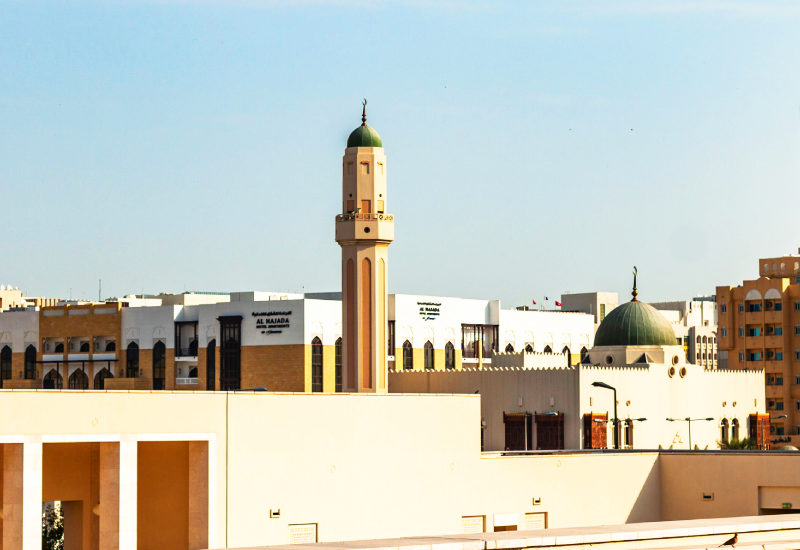
Arches are also another Islamic architectural element that is mainly used in entrances and windows to make a difference from common buildings. Moreover, many Islamic buildings usually include a courtyard or garden to characterize the building and create an ideal visual atmosphere.
Islamic Architecture Characteristics
Islamic architecture characteristics can be defined as a unique set of design elements that are used in many Islamic-style buildings. This can include different techniques, principles, and aesthetics known worldwide among Islamic countries.
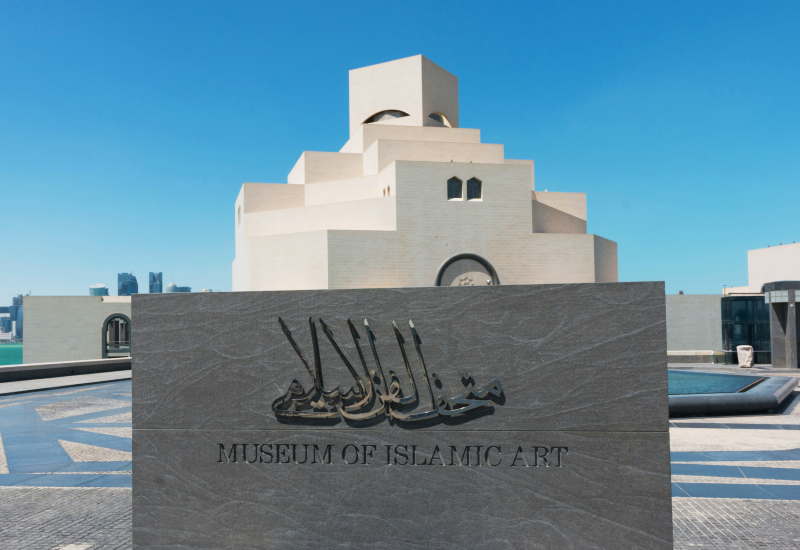
Along with minarets and domes, the unique use of geometric patterns and arabesque, including stars, polygons, and grids used in floors, walls, and ceilings, are also considered Islamic architectural characteristics.
There is also the use of arabesque and calligraphy (usually versed from the Quran) in many Islamic architectures, relatively known as their characteristics. Moreover, symmetry and proportion are also a huge part of Islamic architecture that creates a unique blend of harmony and visual beauty. The use of modular design principles also significantly contributes to Islamic buildings.
Islamic Architecture Examples
The world of Islam is vast, and its buildings and architecture are its prominent beauties. There are many Islamic architecture examples across the world, as this religion has influenced many countries worldwide. One of the first and most significant mosques was the Masjid-e-Nabawi, which was built by the Prophet Muhammad in the 7th century.
Some of the most famous Islamic architecture Examples include:
- Masjid-e-Nabawi (Medina, Saudi Arabia), Umayyad Mosque (Damascus, Syria), Alhambra (Granada, Spain)
- Dome of the Rock (Jerusalem), Sultan Ahmed Mosque (Istanbul, Turkey), Nasir al-Mulk Mosque (Shiraz, Iran)
- Sheikh Zayed Grand Mosque (Abu Dhabi, UAE), Taj Mahal (Agra, India), Badshahi Mosque (Lahore, Pakistan)
Islamic Architecture Features
Islamic architectural features are an important part of its identity. While the dome and minarets are mainly common, we can also explore other features too. Courtyards and water features are also integral parts of Islamic architecture features.
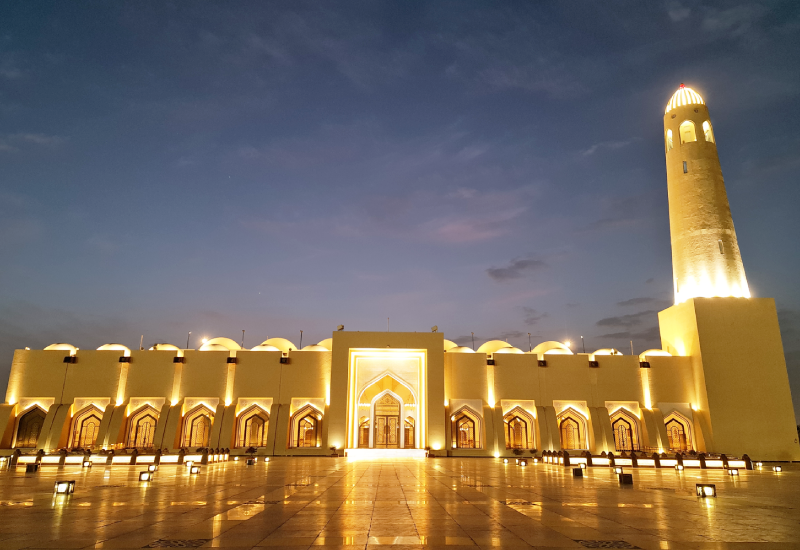
Many mosques and palaces include gardens and vast courtyards. The courtyards in Islamic architecture features can create a sense of relaxation and tranquility for visitors and can reflect the connection between the earthly and divine.
Islamic architectural features are commonly blended with nature and show the importance of maintaining a balance with our environment.
Which Countries Used Islamic Architecture?
Islamic architecture has had a wide influence on many continents and countries by developing a unique style of architecture over time. The Middle East, being the most influenced part of the world, has the most religious sites and Islamic architecture.
Saudi Arabia, Iran, Turkey, Syria, and Iraq are famous countries that include Islamic architecture. Moreover, we can see its influence on other continents, such as North African countries (Morocco, Algeria, Tunisia, etc.), and the Iberian Peninsula, such as Spain and Portugal.
Also, Central Asia, South Asia, Southeast Asia, and Sub-Saharan Africa are also under the influence of Islamic architecture.
Islamic Architecture Influences
Islamic architecture has been influenced by many factors that were both within the Islamic world and from external cultures. Most of the Islamic architecture was inspired by Byzantine, Sassanid, and Umayyad traditions and was adapted into the Islami architectural style.
Later, the core beliefs of Islam also helped a lot in shaping an architectural identity for Islam to reflect the main beliefs of this religion.
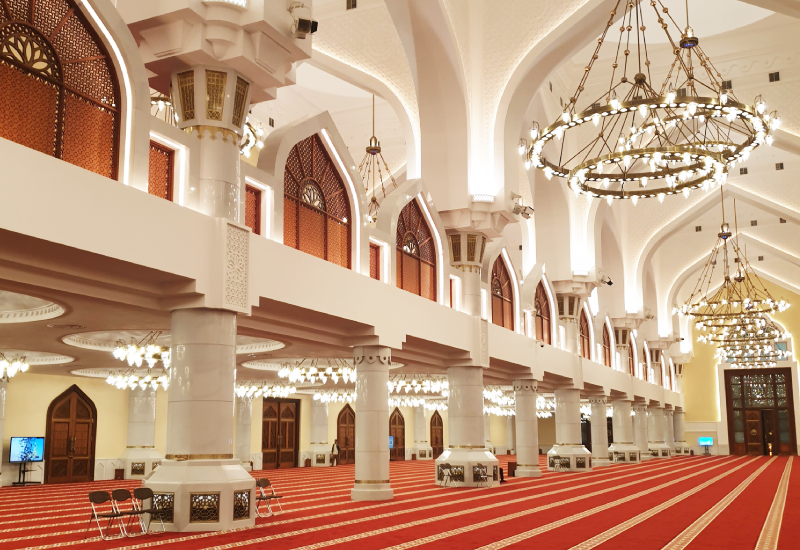
Another reason for this influence on the unique style of Islamic architecture was trade and cultural exchange, which was really common during that time in many areas of the world, such as India, China, and the Byzantine Empire.
Islamic Architecture Today
Islamic architecture continued to evolve and led to success in many countries as it raised a lot of attention for its amazing and beautiful style.
Today, in many Muslim countries or even small areas that are inhabited by Muslims, we can see Islamic architecture and buildings that are combined with modern materials and new designs while holding on to basic principles.
These types of Islamic architecture that we can see in today’s world create new and innovative styles that can be used to make something special. Moreover, many modern Islamic buildings include sustainable design principles.
Connections and Meanings
Islamic architecture, besides its beautiful style, reflects important meanings and connections. Unity and divinity are the most common concepts of Tawhid and are the fundamental beliefs of this religion. Shrines and mosques also symbolize the infinite nature of God (Allah).
Humility and modesty are other fundamental concepts of Islam that are sometimes reflected through Islamic architecture. It is also heavily emphasized to create a kind community and evoke a sense of hospitality.

Open courtyards, arcades, and communal spaces are also common features of Islamic architecture that encourage social interactions and gatherings for Muslims and other visitors.
Famous Muslim Architects
Muslim Architects are known for their unique works, and throughout history, they have been famous globally. Famous Muslim Architects have left a lasting legacy, and their works are still masterpieces. In the follow-up, we will introduce you to some of the most recent and well-known architects of the Islamic world to explore their amazing works and unique styles:
Sinan (c. 1489-1588): One of the amazing Ottoman architects who designed over 300 structures based on Islamic principles of architecture, such as Mosques.
Hassan Fathy (1900-1989): Hassan Fathy is an Egyptian architect who was inspired by the traditional Islamic and Egyptian buildings
Hossein Amanat (b. 1942): He is an Iranian architect who is well-known for his iconic work, the Azadi Tower in Tehran.
Islamic Architecture Facts
Domes are the most prominent features of Islamic architecture.
Islamic architecture has influenced a lot of nations and countries as it is very inspirational and unique.
The first minarets (another main feature of Islamic architecture) were constructed in the 7th century CE.

Islamic architecture is actually one of the few styles that incorporates geometric patterns and mathematical principles in its design.
Calligraphy and other decorative elements are the most beautiful features of Islamic architecture worldwide.
Calligraphy also reflects the importance of written words and the Holy Quran Verses.
Last Words
Islamic architecture characteristics are unique and famous for their artistic craftsmanship and patterns. Many iconic Islamic buildings are UNESCO World Heritages, such as the famous Taj Mahal and the Alhambra. The footprints of this architectural style can be seen in different countries and have influenced a lot of nations due to its rich and immersive history. Moreover, the principles of Islamic architecture and Islamic architecture characteristics are still an inspiration for many famous architects all around the world.
Are you planning to travel to Qatar and looking for a Qatar travel agency? Check out our Qatar hotel page & Qatar tours and feel free to contact us.

